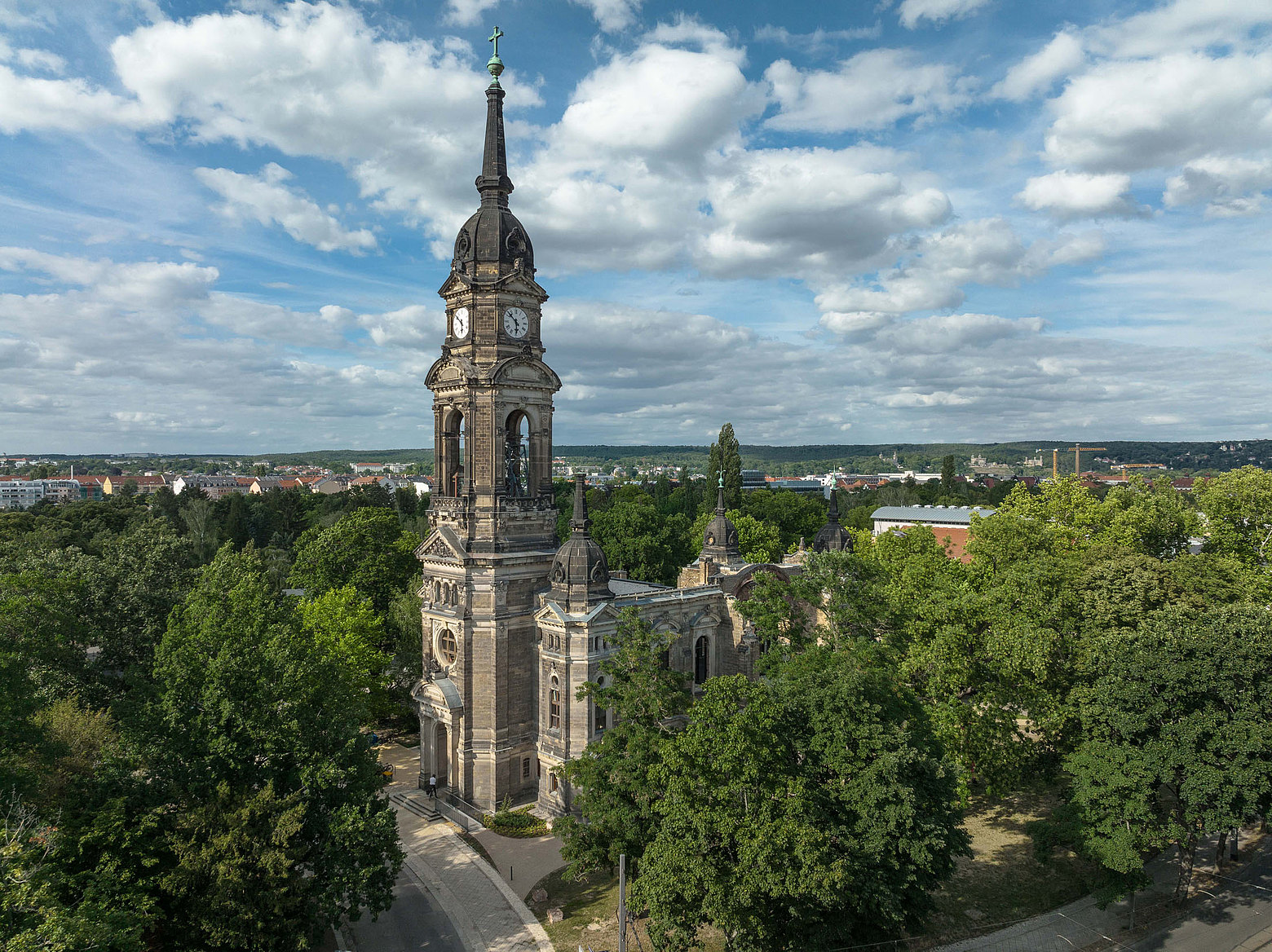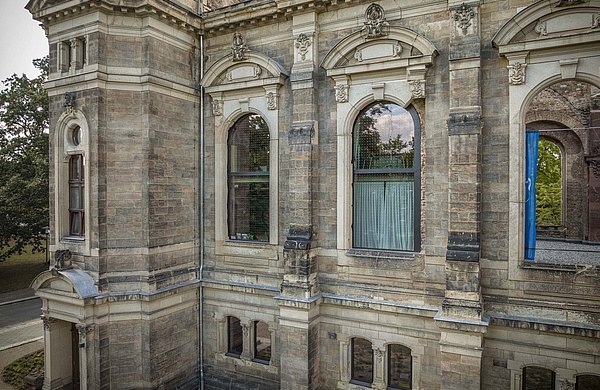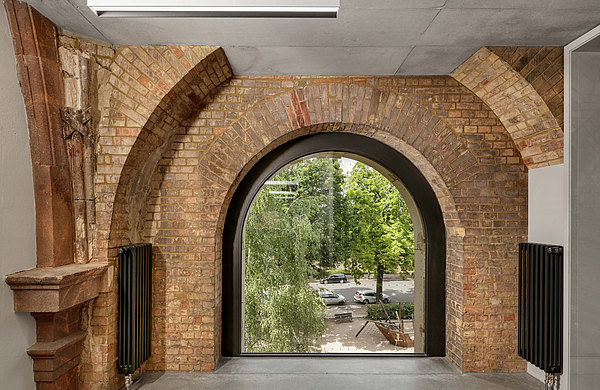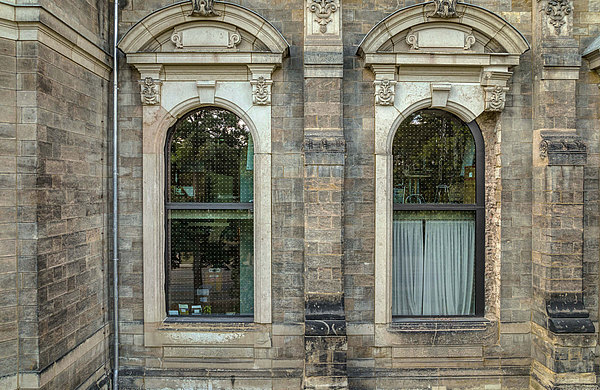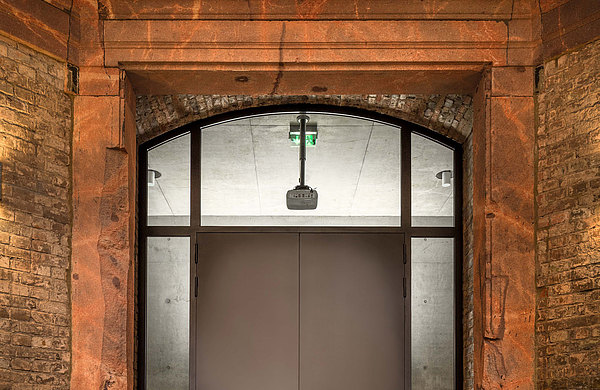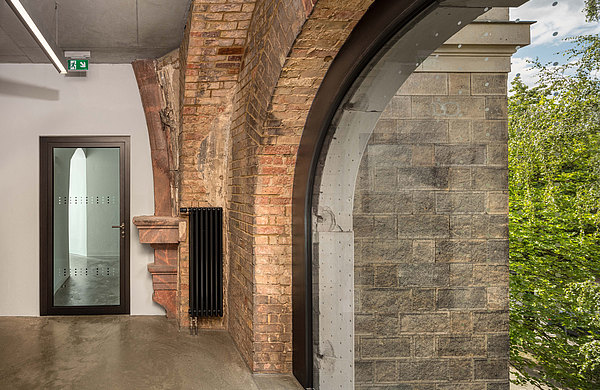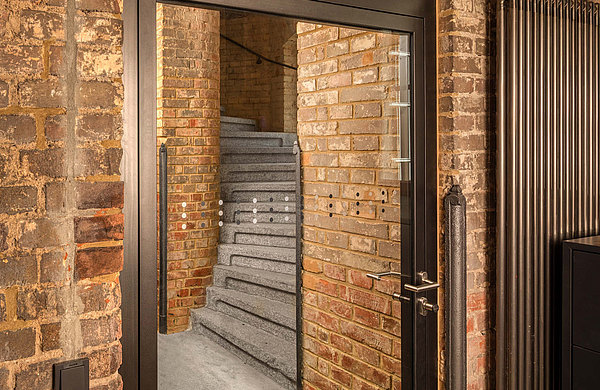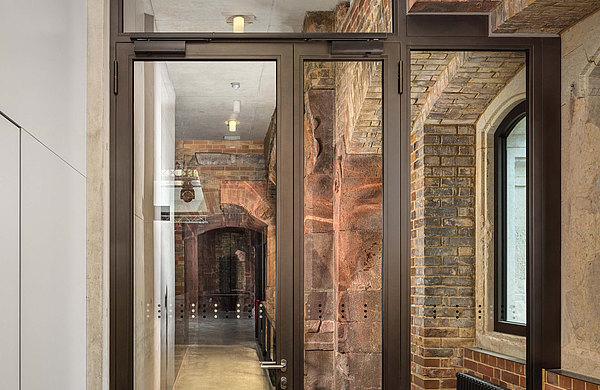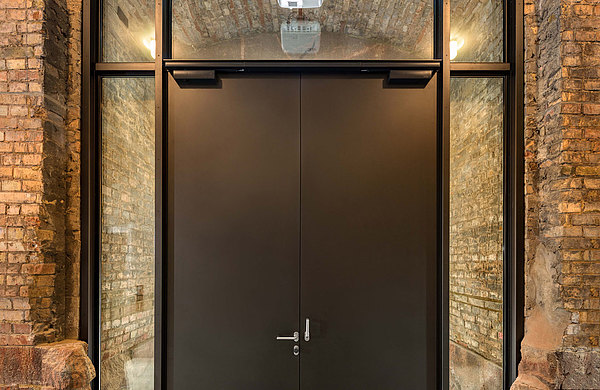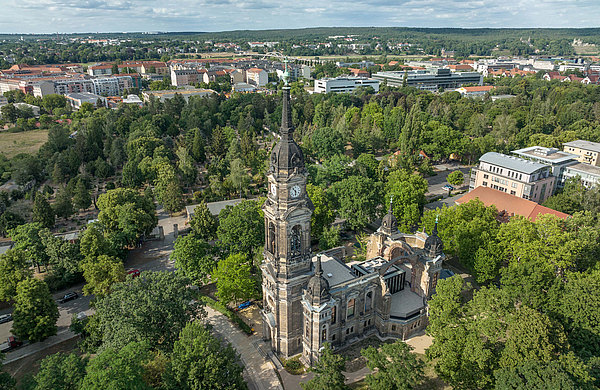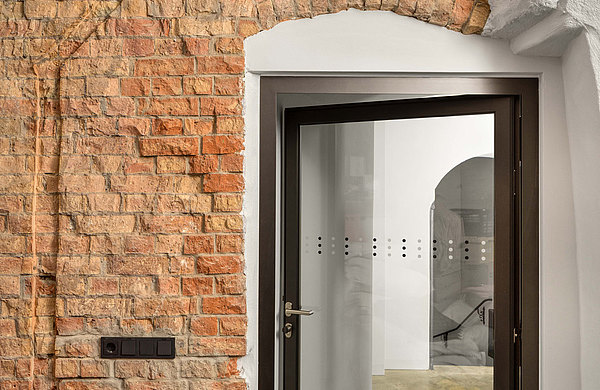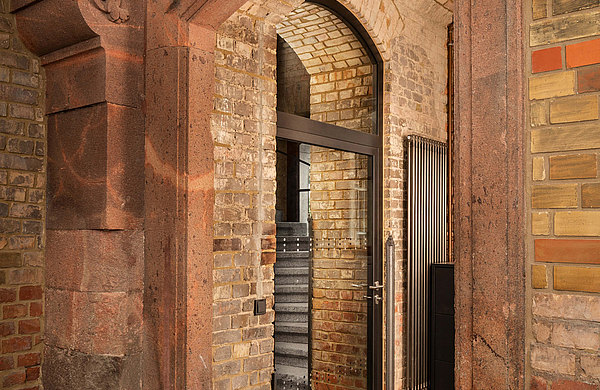Trinitatiskirche Dresden
A modern glass cube in a war memorial
The ruins of the Trinitatiskirche (Trinity Church) in the district of Johannstadt in Dresden have been given a new lease of life. Following a two-year rebuild, a spectacular glass cube has been constructed inside the walls of the war memorial according to blueprints from the local architecture office Code Unique Architekten GmbH. The existing building structure was also renovated, and was fitted out with large fixed glazing elements, glazed doors and partitions in both indoor and outdoor areas. Here, the slim profile systems from Forster ensure a transparent sense of lightness while also meeting the strictest fire protection requirements.
Built in the neo-Renaissance style at the end of the 19th century and featuring a 65-metre-tall bell tower, the Trinitatiskirche was gutted by fire during the bombing of Dresden in February 1945. Afterwards, demolition by the East German government was prevented at the end of the 1960s. A newly built glass cube in the middle of the ruins now houses an event hall designed for flexible use, while the aisles of the church are used for youth work. The Trinitatiskirche is also home to the city’s youth parish office and the administration office of the evangelical youth organisation. The former place of worship has been fitted out for its young visitors with comfortable sofas, a screen for showing films and a self-help workshop for repairing mobile phones and bikes in the basement.
An exciting combination of memorial and meeting place
Measuring nine metres by nine metres, the cube was designed in steel, concrete and glass to fit perfectly inside the church ruins, with the exterior walls, columns and arches retained in line with requirements set out in the preservation order. The architect Paula Koppisch from Code Unique Architekten GmbH in Dresden wanted to develop the existing structure as carefully as possible in order to maintain the historic building as a memorial against war and destruction while also transforming it into an attractive meeting place for young people.
During the conversion, the main challenge was to integrate the new building into the existing building stock without significantly affecting the overall visual impact of the ruins. The vision of the architect has worked impressively – the remains of the church can still be experienced to the full through the 5.5-metre-tall glass dome, and even the clock on the church tower can still be seen from inside the hall.
Slim, environmentally friendly and safe: Forster profile systems
The glazed facades feature four large forster unico fixed glazing elements measuring 2.50 by 5.20 metres with segmental arches, which do not disturb the transparent effect of the cube thanks to their minimalist frame design. The forster unico door system with thin profile widths was chosen for the two entrance doors due to its understated design. The forster unico system profiles are made entirely from recyclable steel and, unlike conventional systems, do not contain any synthetic insulating materials.
On the internal doors of the new glass building in the church ruins, the slim, flush forster fuego light and forster presto profiles ensure the required fire and smoke protection. Forster fuego light meets F30 and T30RS fire protection regulations, with its outstanding transparency ensuring the interior is flooded with daylight. The fire resistant doors and fire resistant glazing made of narrow steel frames and expansive glazing fit in perfectly with the large forster unico fixed glazing with segmental arches.
What all Forster profile systems have in common are a clear design utilising the latest technology and high levels of energy efficiency. As the special connection technology allows for particularly narrow profile cross-sections, the forster unico system is the ideal solution for listed buildings while also meeting the strictest technical and physical demands relevant to the building. The sustainable conversion of the Trinitatiskirche using long-lasting steel and glass is enriching the district of Johannstadt in Dresden with an impressive meeting and communication hub for young people, initiatives and clubs.
Dresden, Germany
forster unico, forster presto und forster fuego light
Architecture: Code Unique Architekten GmbH, Dresden
Metal fabrication: Kürschner Stahl- und Metallbau (windows), Metallbau Papendick (doors)
Client: Evangelische Kirchenbezirke Mitte und Nord
Photography: Thomasz Lewandowski

